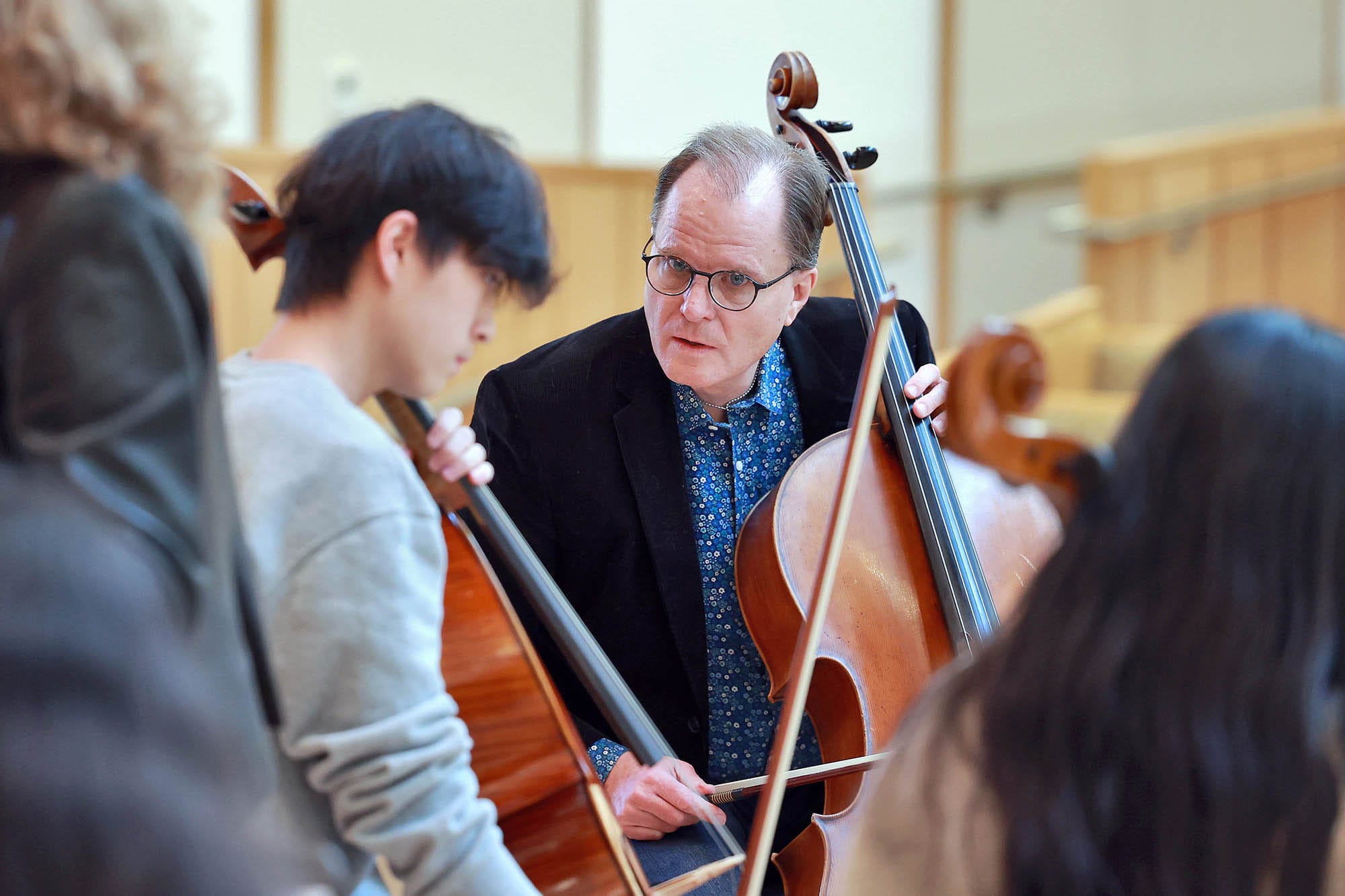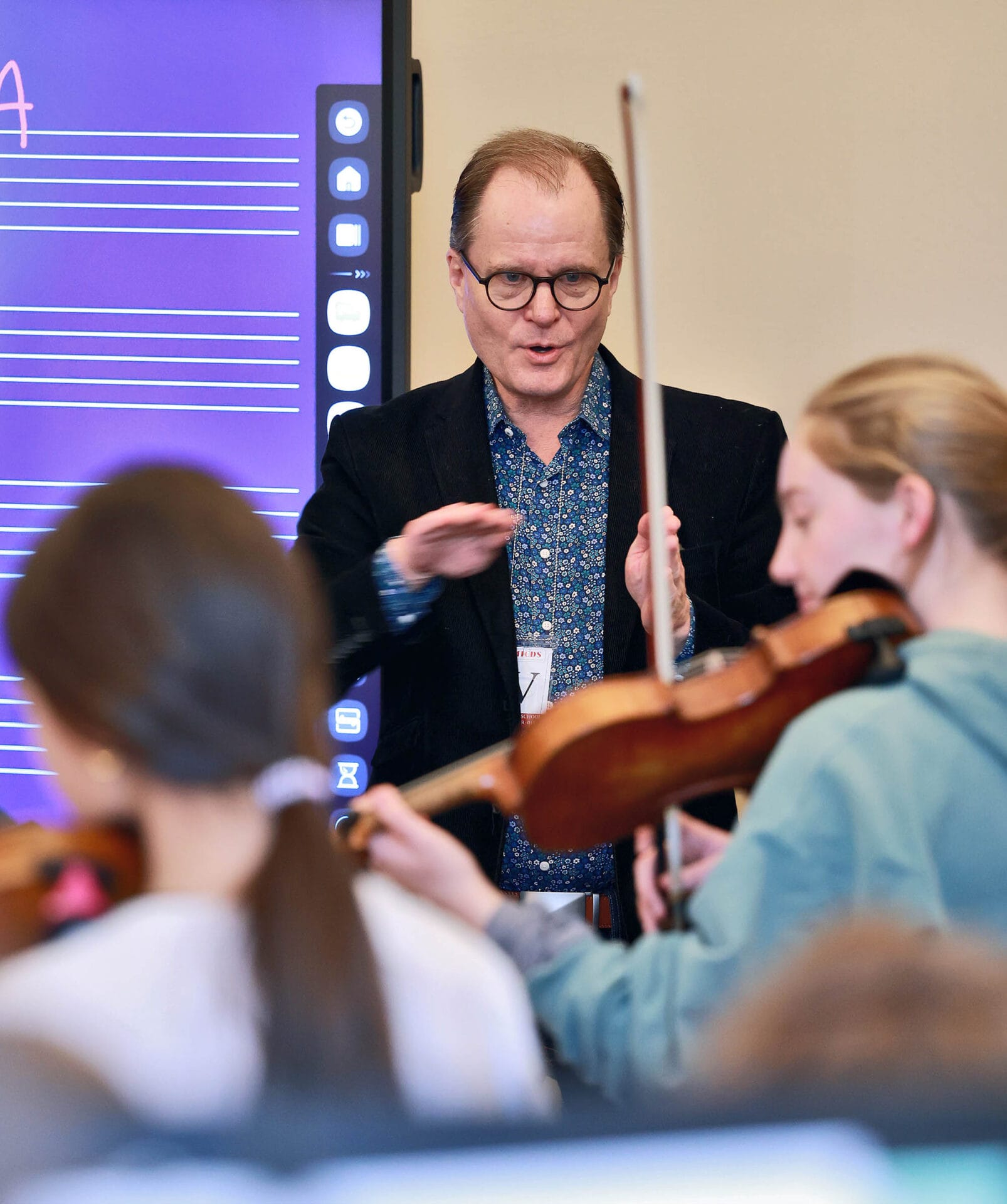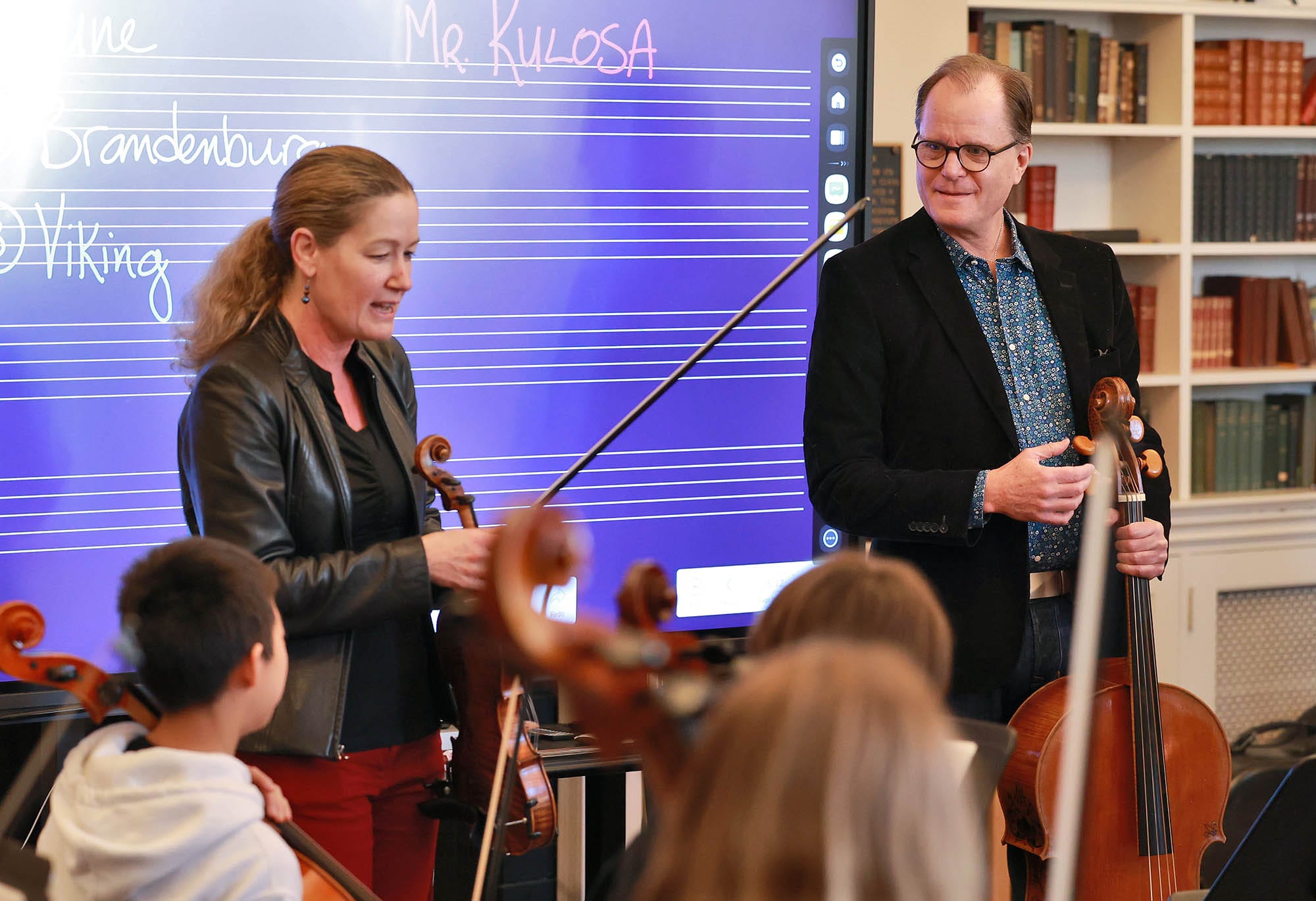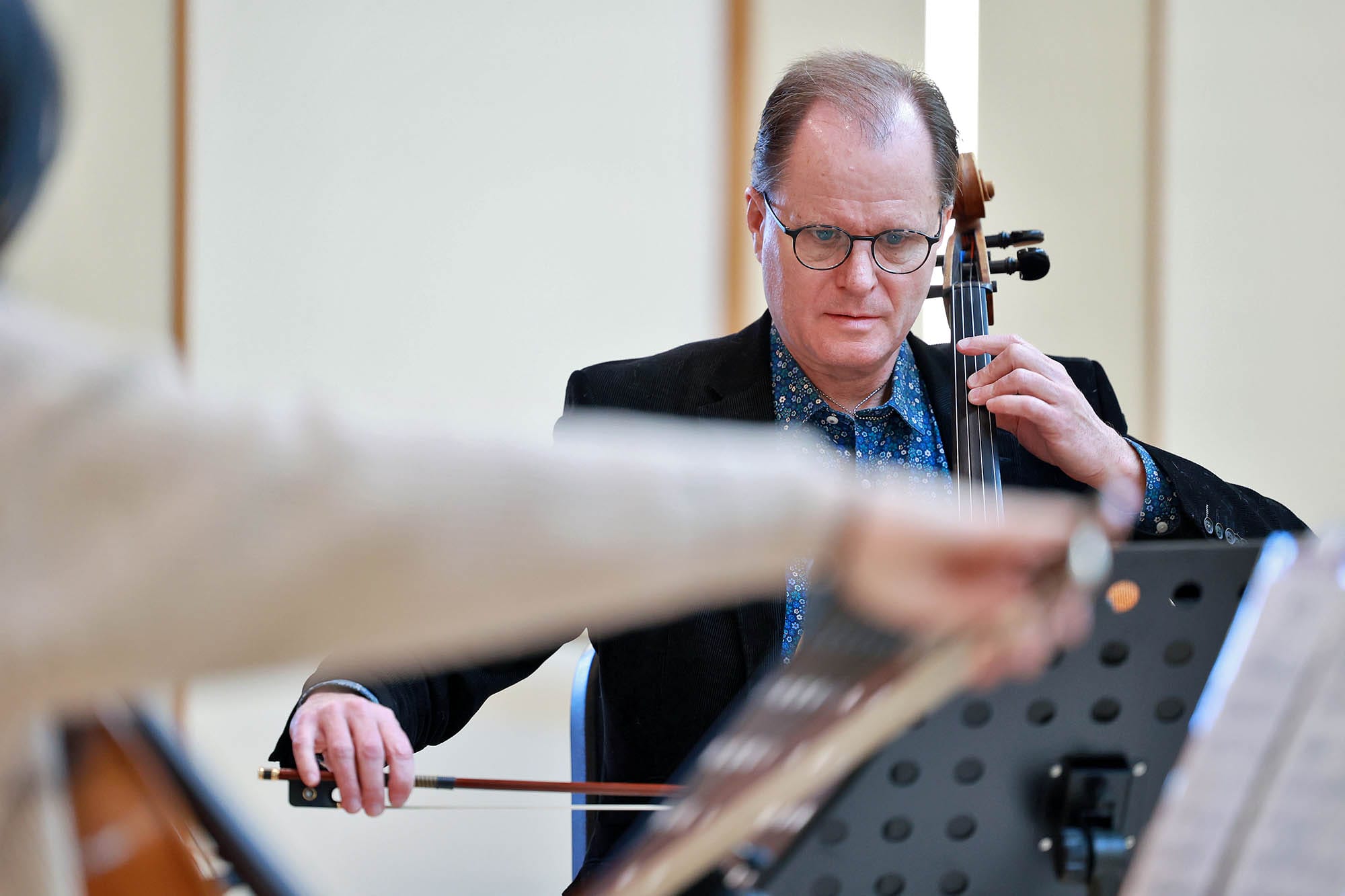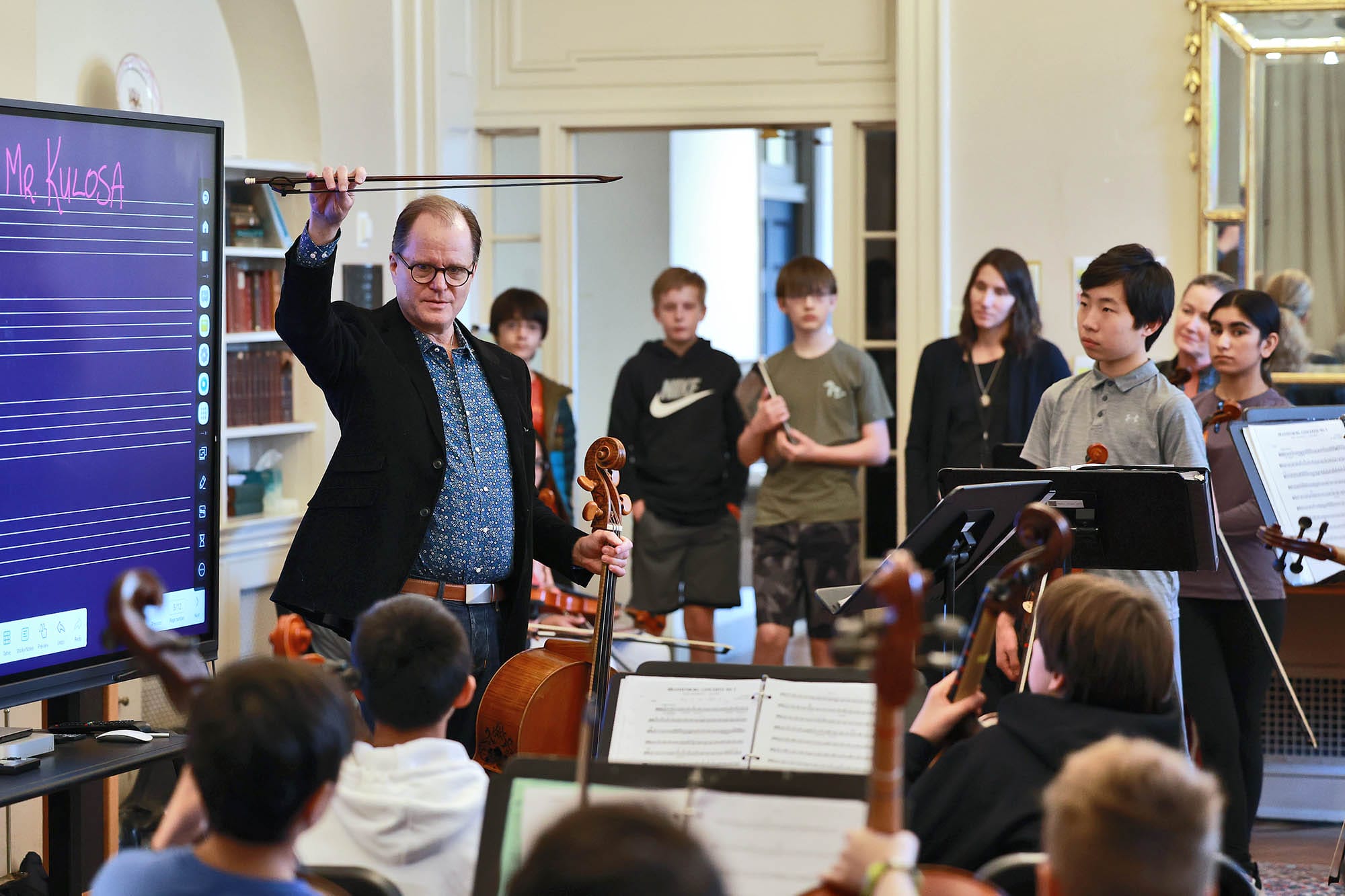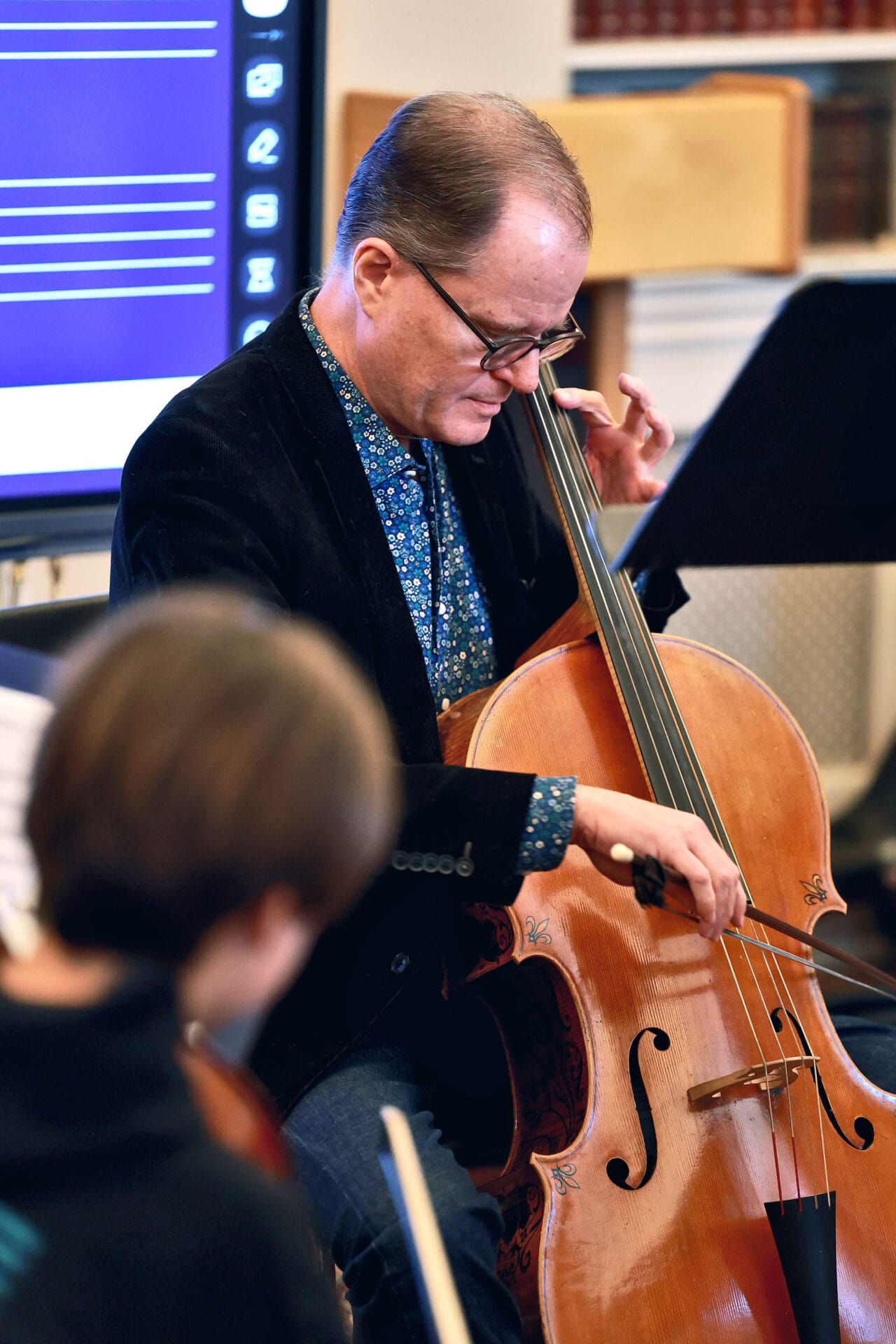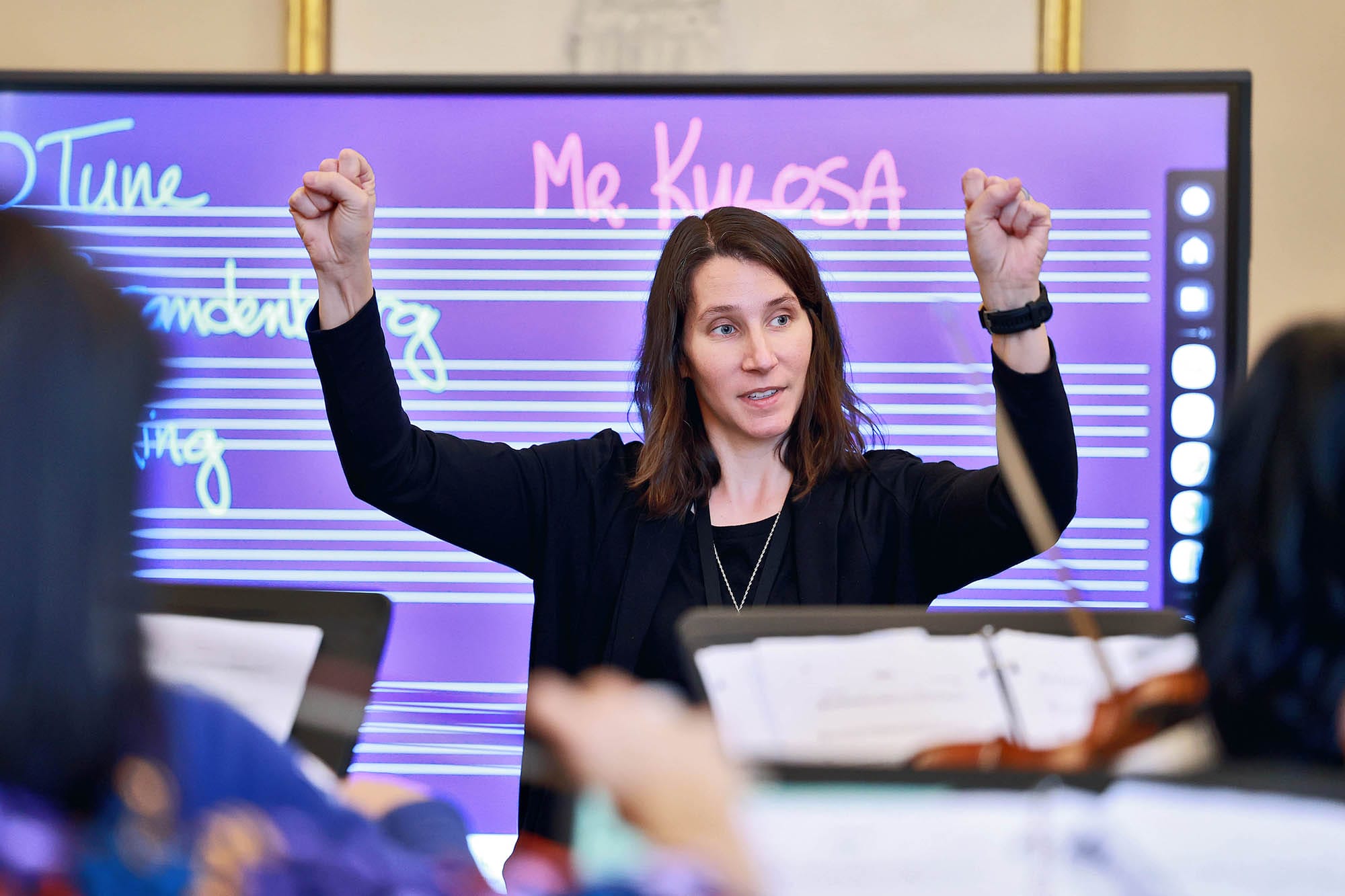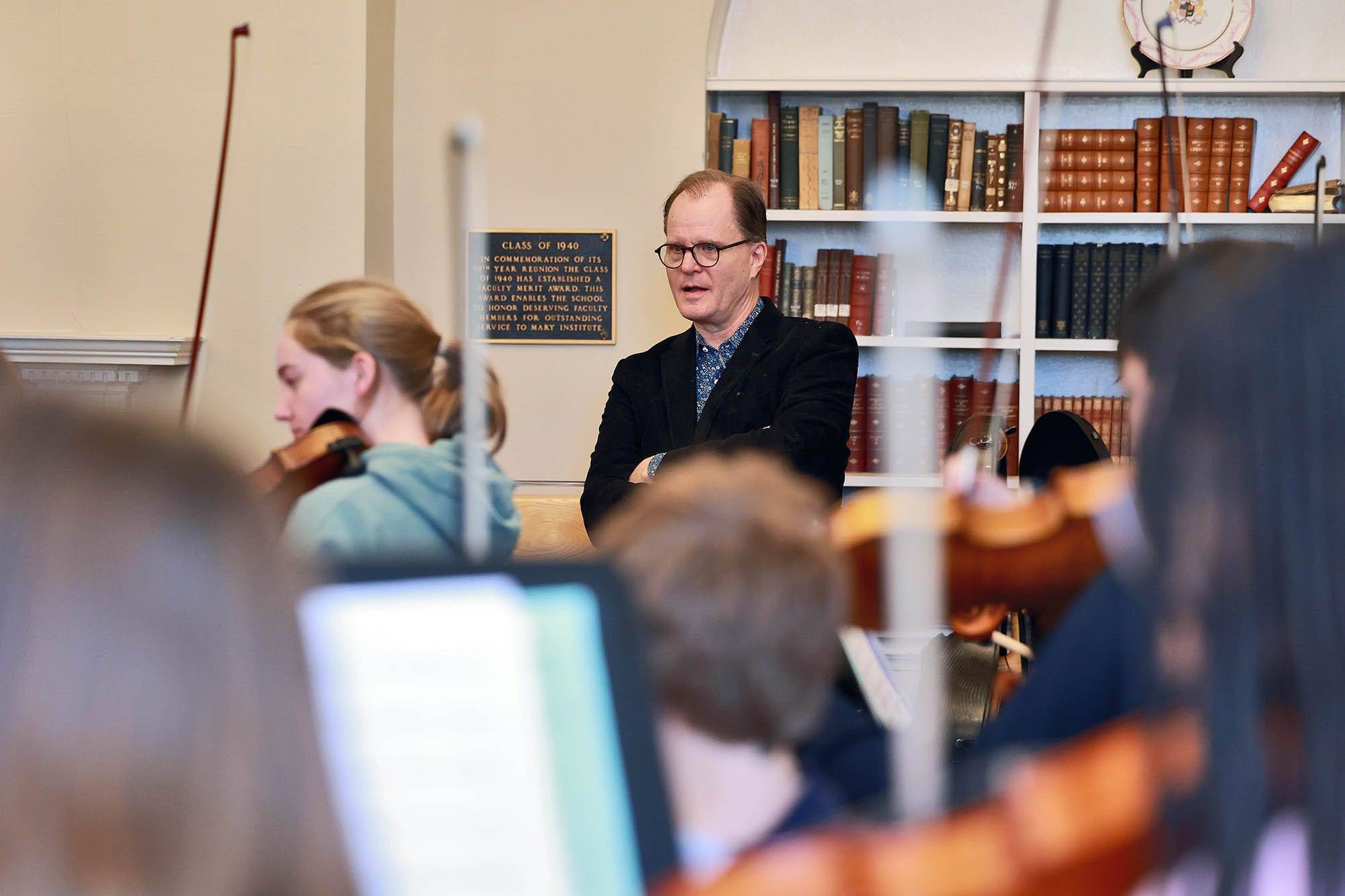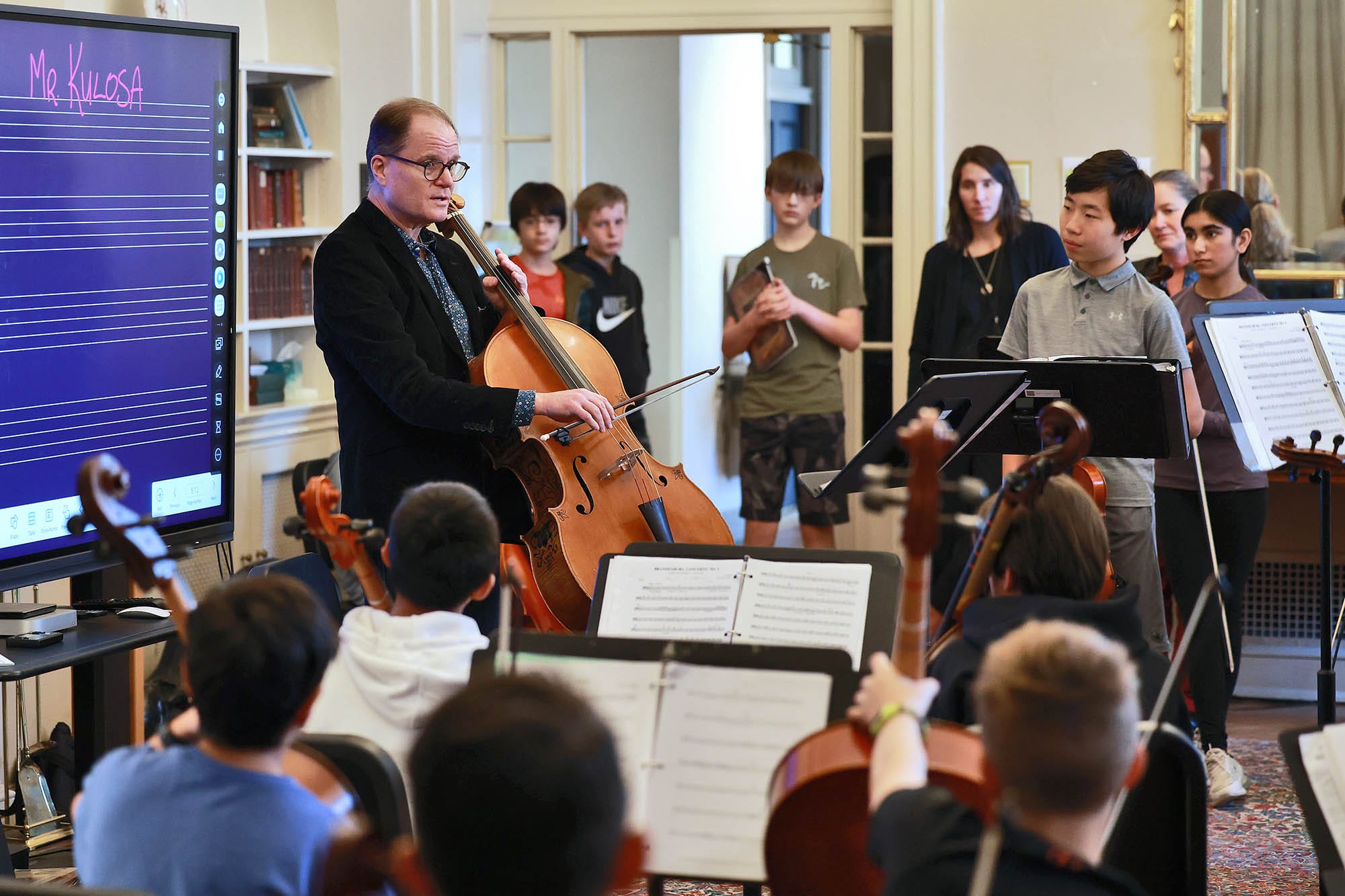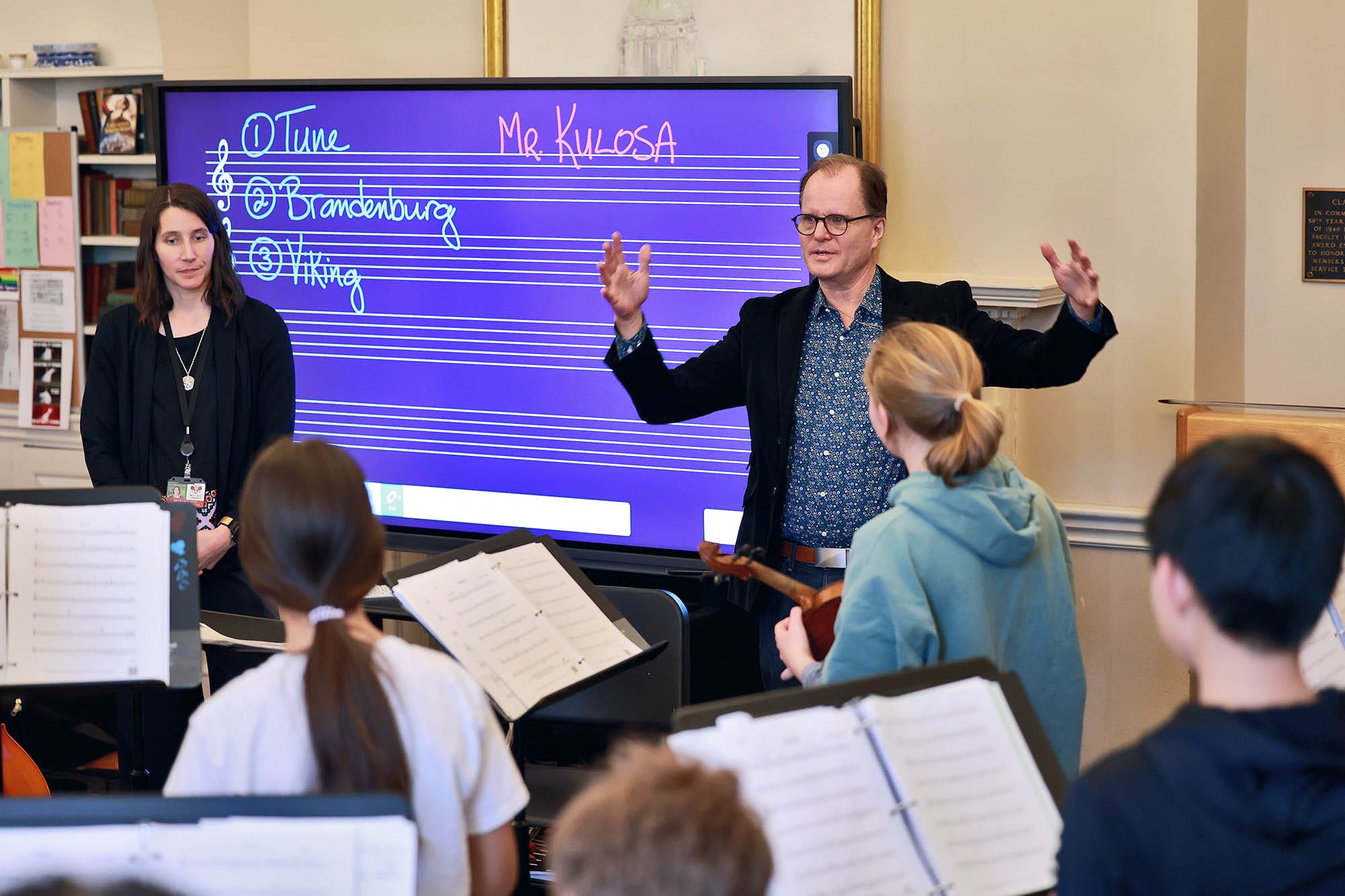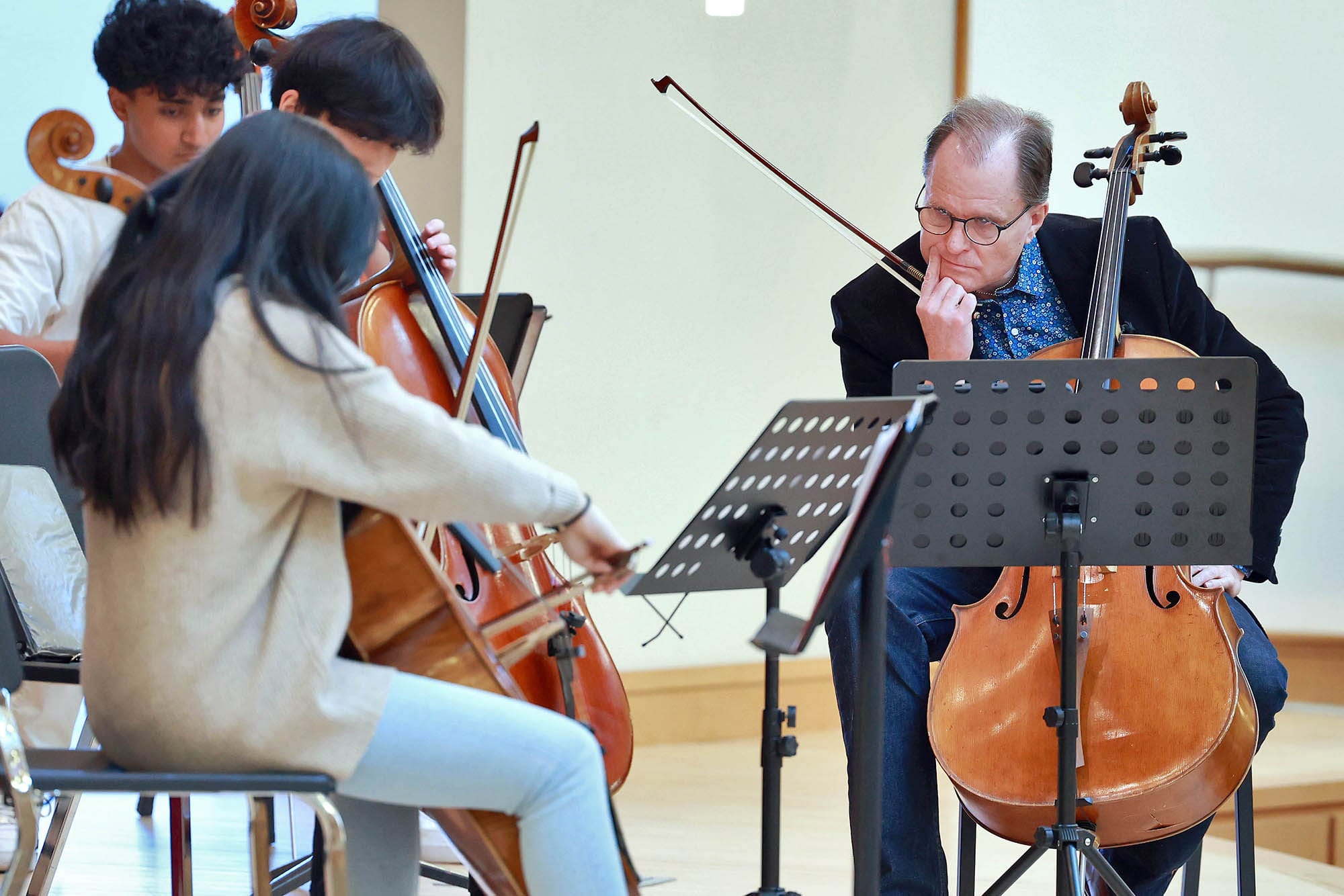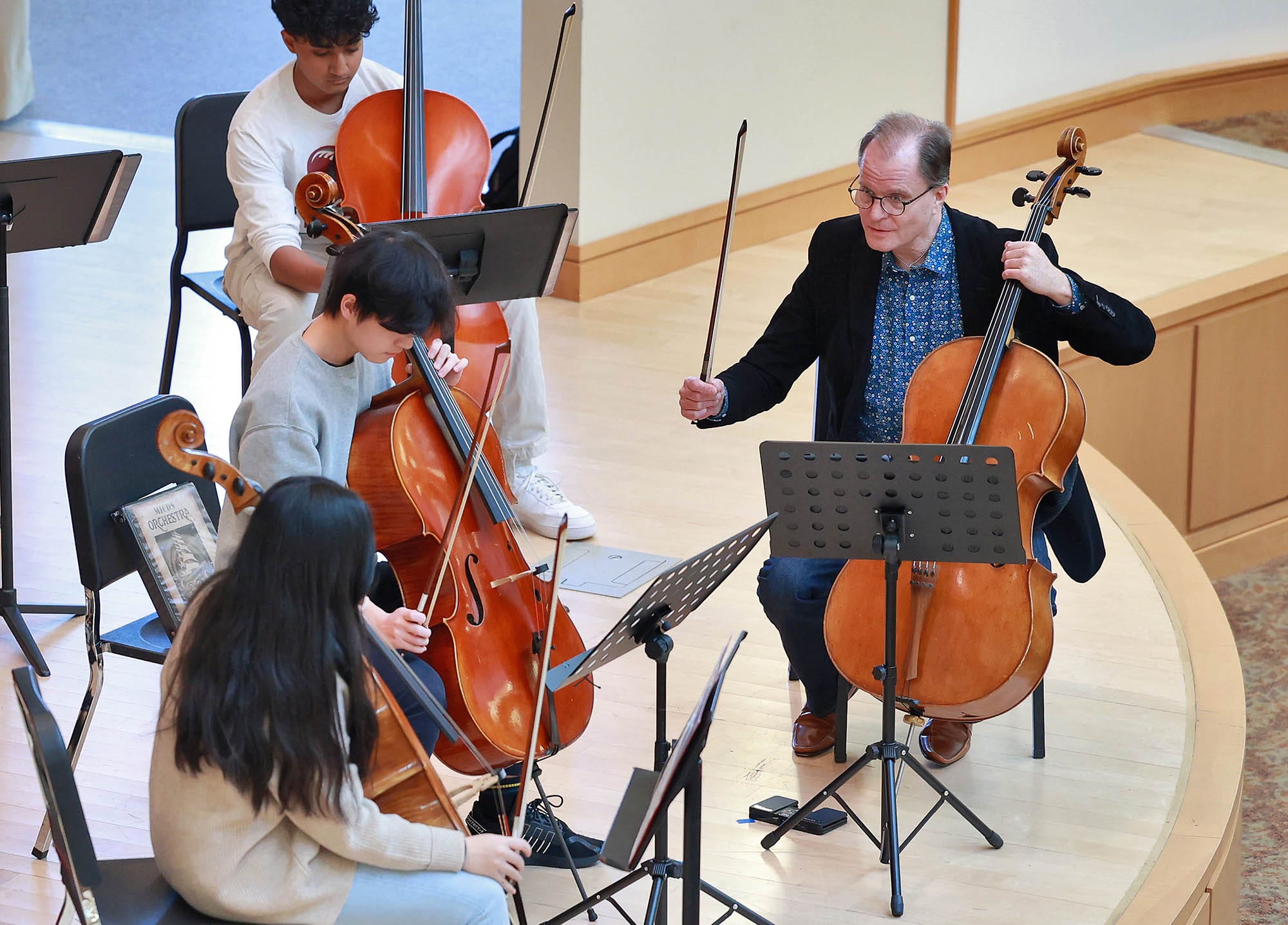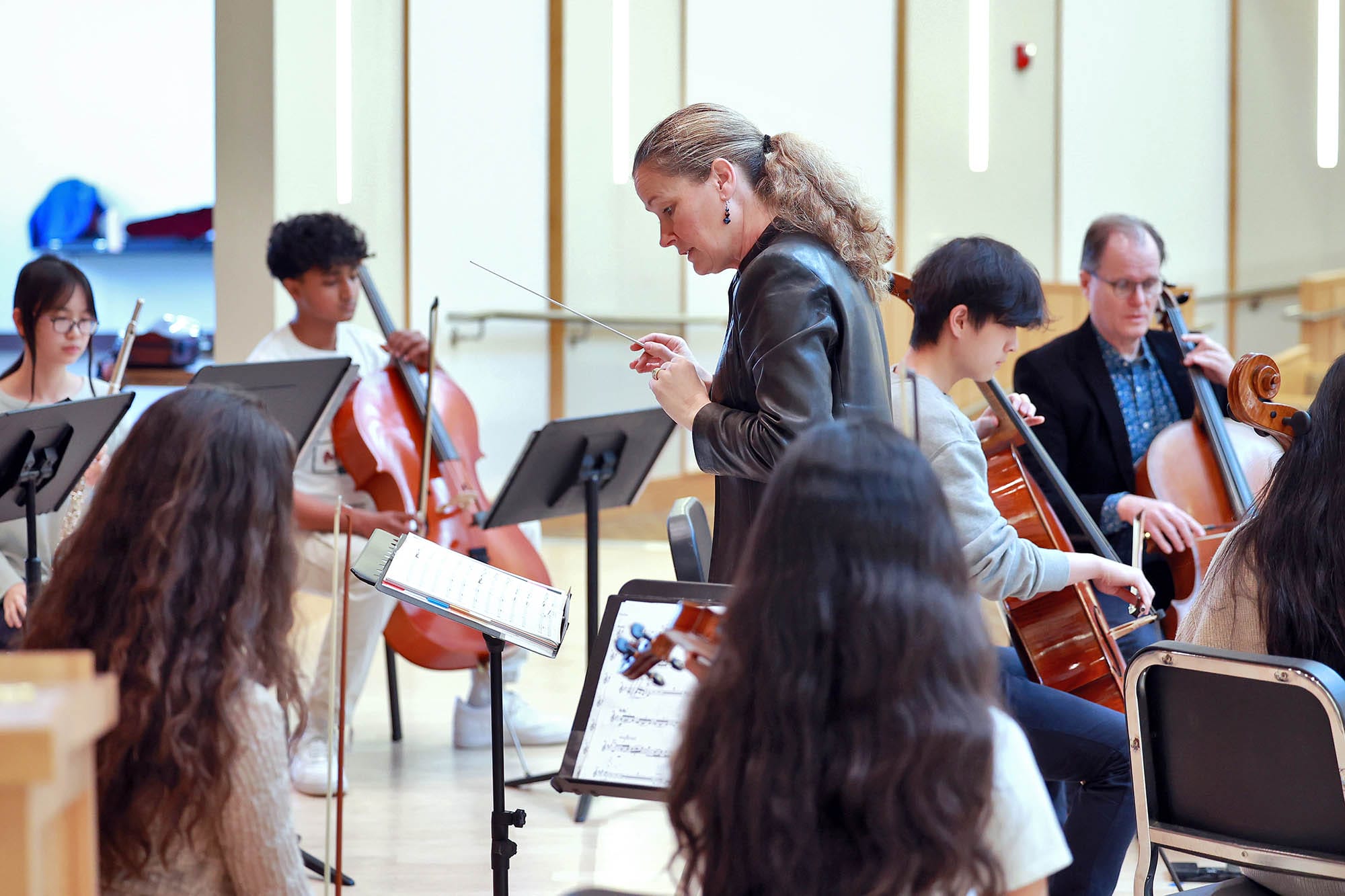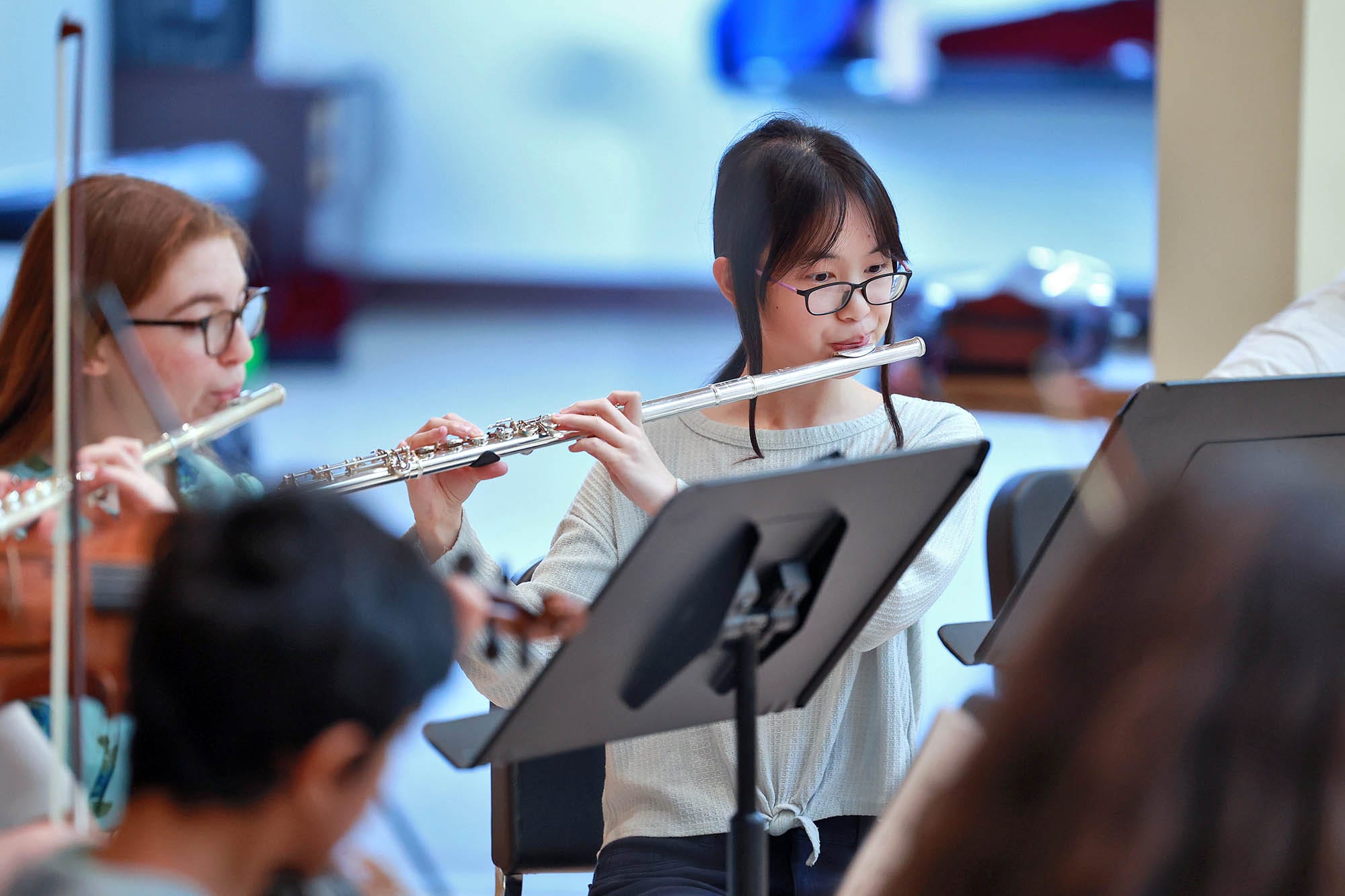The room is quiet before hearing the sound of a bow pulled across a single violin string.
Not a squeak or a squeal, but a long, smooth note.
A precise and confident “vringgg.”
Kenneth Kulosa leans in. He takes a closer look, concentrating his attention on the sound of the student’s violin. The high, clean “vringgg” fills the Middle School’s Alumnae Room. “Yes. Good,” his reassurance follows.
At the invitation of Dr. Jo Nardolillo, JK-12 Arts Department Chair and Orchestra Director, Kulosa spent a day last week visiting and coaching MICDS Middle and Upper School music students. “They loved it,” said Dr. Nardolillo. Kulosa is a world-renowned cello player specializing in Baroque music. He plays professionally in France during the summers when he is not teaching at Webster University and Washington University, tutoring musicians, or playing as a member of Chamber Project St. Louis. A day of demonstrations, lessons, practice sessions, and conversation was not enough for the students who worked with him. “They want more time with him,” said Dr. Nardolillo. Even after students enjoyed lunch with Mr. Kulosa, asking him questions about his music and interests, hearing stories from his long and successful career, and performing with him on stage at their March 7th concert, “every single person said they didn’t get enough time with him.”
The sound of history, alive and vibrant, fills the air.
The Baroque music Kulosa is known for playing, while never at risk of becoming extinct, could be considered an endangered species. The main event overshadowed by its spinoff. An original upstaged by its understudy. Modern classical music, the kind performed by today’s symphony orchestras, has evolved to use instruments that play higher and louder than their Baroque-era counterparts.
Dr. Nardolillo explains that the classical music that today’s listeners are familiar with evolved from the Baroque era, centered in Italy and Germany from the late 1600s into the mid-1700s. That time period, she explains, “was the hotbed [for Baroque music]. It was when the instruments were developed and musical styles and genres were established. It’s when our foundational ‘celebrity’ composers, performers, and instrument makers lived.” It was the era of Bach, Handel, and Vivaldi. The era of famed violin maker Stradivarius.
Baroque instruments of the time were larger than modern instruments. Some pieces from the era that exist today are known to have been modified and cut down to be smaller in order to play higher notes. Modern fingerboards are longer, so musicians can play more notes, and the angle of the neck and fingerboard are more intense, so the instruments can be played louder. Modern bow shapes are different and string material, now synthetic, plays and sounds differently than Baroque strings that were made of animal intestines. 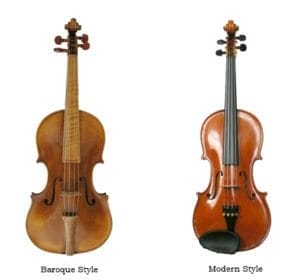 Kulosa’s cello, however, is a Baroque-style instrument that embraces the design of that era and thus produces sound consistent with the composer’s intention for the music. Dr. Nardolillo reminds us, “Modern isn’t better, necessarily.”
Kulosa’s cello, however, is a Baroque-style instrument that embraces the design of that era and thus produces sound consistent with the composer’s intention for the music. Dr. Nardolillo reminds us, “Modern isn’t better, necessarily.”
Before audiences claim to dislike Baroque music or consider it unapproachable, Dr. Nardolillo asks them to consider, “What would this music sound like on the instruments it was written for?” How would audiences enjoy the music if it were played in the small, intimate setting for which it was intended? To experience a chamber music performance and hear it as it would have been played originally gives audiences an opportunity to step back in time, “and it’s glorious,” she said. “Doing period performances is kind of like the music equivalent of doing historical reenactment.” It is this music that Kulosa is considered an expert around the world at playing, and the music he took some time to demonstrate to our MICDS students.
More arts. More music. Better learning. A better education.
The inclusion of music as an integral part of the curriculum starts in the Lower School. “We start the students with a really fantastic music program—all the way in JK—and by the time they get into third grade, they are already singing; the Beasley choir is fantastic,” Dr. Nardolillo said. By fourth grade, students are getting a preview of the band program with the introduction of the recorder and becoming familiar with the string instruments with the introduction of the ukulele. “We try to give kids opportunities and pathways to find their voice,” she said. Students might be deeply passionate about playing music, others may feel the same way about singing, and there are those who want to draw or paint. Students gravitate toward different areas of the arts, and Dr. Nardolillo emphasizes that “we’re there to make sure that doorway is open to them.” That approach, giving students a wide range of artistic experiences to inform their artistic passions, underpins efforts to bring unique artists like Kulosa to MICDS.
Studying the arts and improving individual artistic ability is beneficial in and of itself, plus incorporating the arts in its various forms into academics has a dynamic impact on learning. “Music is very social, interactive. It’s a team sport,” says Dr. Nardolillo. “Students who are in strong music programs and strong arts programs are happier, more connected people, but they also do much better in high academic settings.” Studying the arts amplifies the education students receive in all areas of study. “There is an absolute, direct connection” to studying music and improved academic performance. “Luckily, this school recognizes that,” she said.
The education that MICDS students receive is strengthened by their art instruction, and their art instruction is strengthened by visiting artists like Kulosa. How might teachers, then, grapple with a situation where a visiting artist tells students information that contradicts what they have learned in class? Dr. Nardolillo sees it as a learning opportunity. “You hope visiting artists contradict your lessons, saying ‘it’s art and art is an individual expression.'” 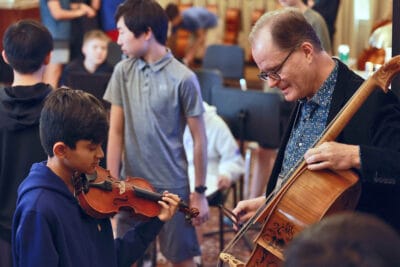 Lower school students have an excellent art curriculum. “Sarah Garner teaches a great art class,” said Dr. Nardolillo, “and having a visiting artist come in (as Mrs. Garner often does) is interesting and different.” It gives students the chance to see how that artist is inspired, how they work, and how they think about art and approach their craft. The same is true for Upper School students and their teachers when artists who have work on display in Messing Gallery spend a day on campus talking about their work.
Lower school students have an excellent art curriculum. “Sarah Garner teaches a great art class,” said Dr. Nardolillo, “and having a visiting artist come in (as Mrs. Garner often does) is interesting and different.” It gives students the chance to see how that artist is inspired, how they work, and how they think about art and approach their craft. The same is true for Upper School students and their teachers when artists who have work on display in Messing Gallery spend a day on campus talking about their work.
“If I have someone come in and they tell the students the exact same thing I tell them, then why did I have that artist visit?” asked Dr. Nardolillo. “There is no one ‘right way’ to do something,” she said. “One of the great benefits of having guest artists is the exposure to more than one idea. We want students to have the widest palette available, and even then, you want them to break the rules because then they’re truly their own artist and have their own voice.”
That ideal scenario played out with Kulosa’s visit. Dr. Nardolillo was excited with the result. “Within a minute, Ken was really making a difference in how students were playing and thinking about the music.”
